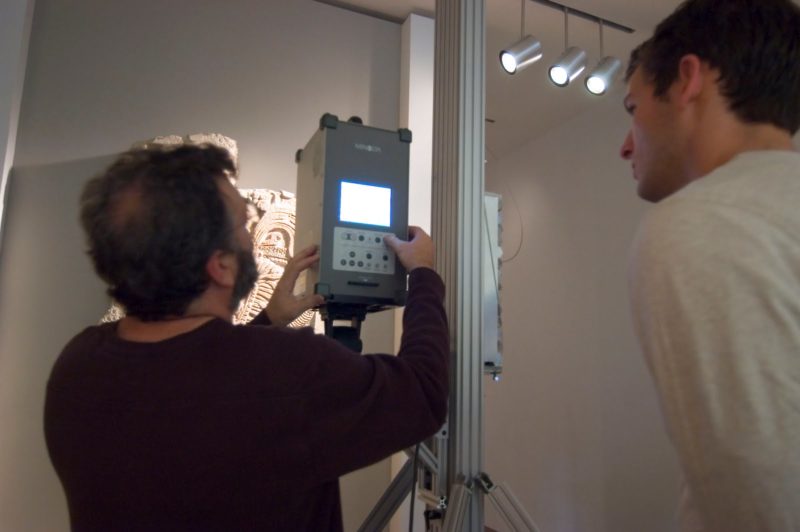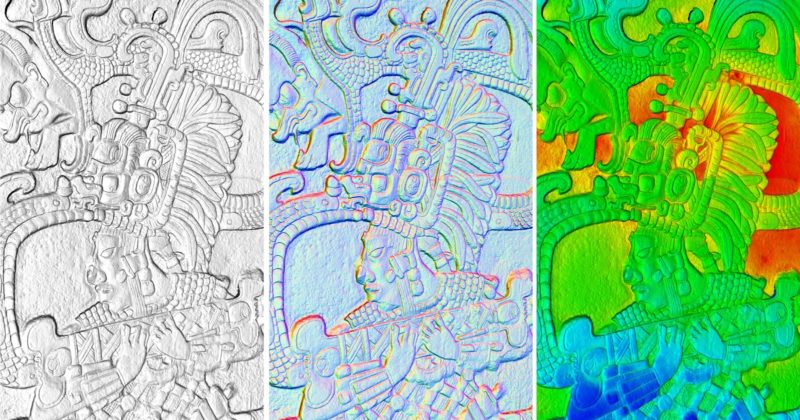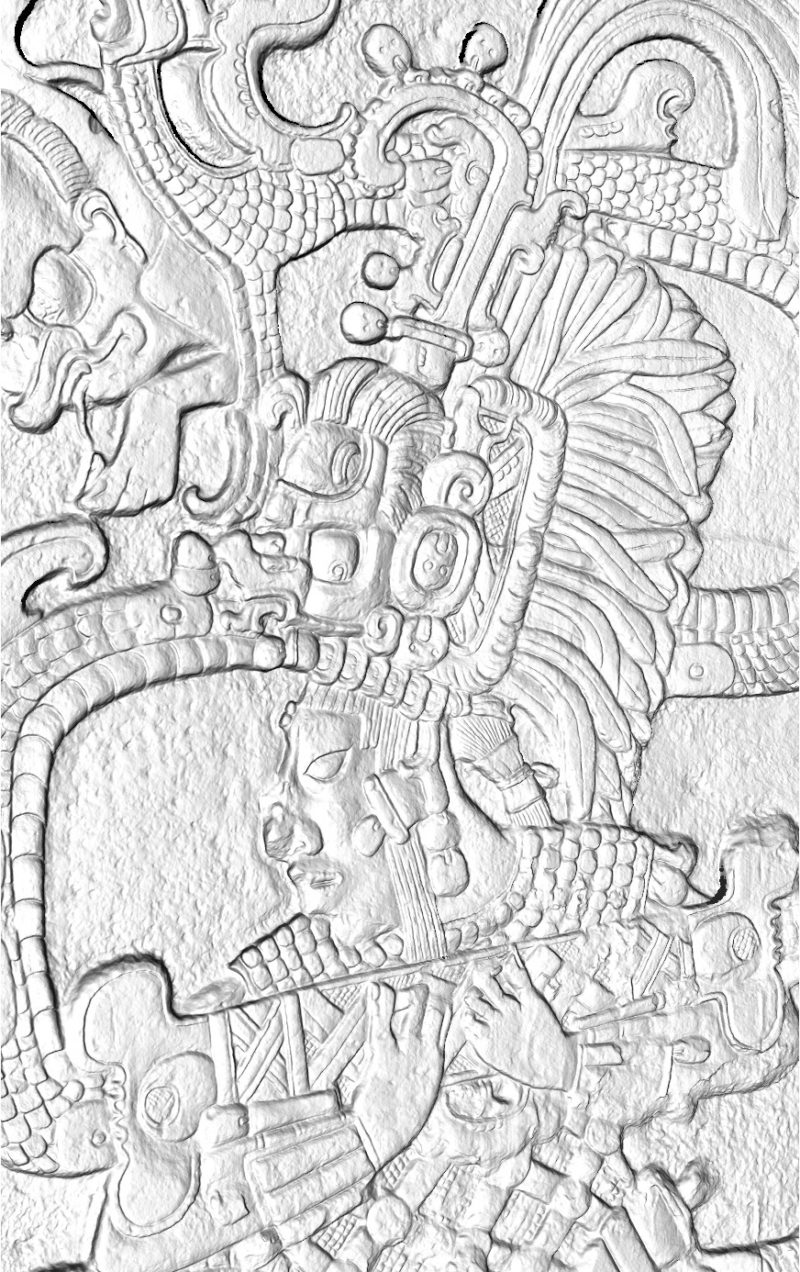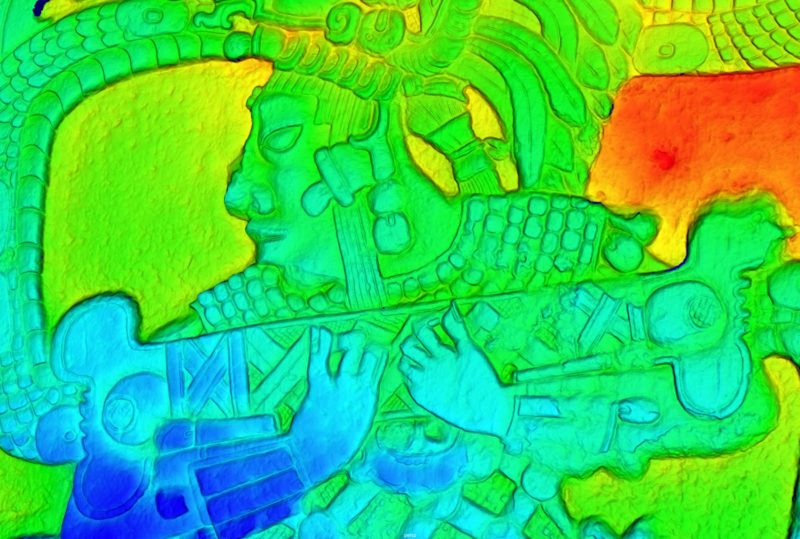To document this stela with Queen Ix Mutal Ahaw for the de Young Museum in San Francisco, we used non-contact photometric stereo capture, a technique we developed with James Patterson at the Oxford University Robotics Department. This technique involves acquisition of multiple photographs under varying light & camera placement, as detailed in our paper here.

Our team used a custom gantry to move a laser and camera in front of the stela under study, as shown to the right. In the ½ hour allotted including setup, the team gathered 23 point cloud scans and a large number of photographs from which we created the model shown.

Below, we juxtapose three computer renderings of the stele; from left to right: grisaille rendering, mapped normals, and a false color as depth view. The view at left presents the surface of the stela without color in order to better inspect surface contours. The middle view accentuates changes in surface curvature by visualizing surface vectors as red, green and blue colors: in this way, more acute changes in the surface topology are seen as more saturated colors. At right, a false color rendering highlights the relief present by altering surface color based on the depth of the carving.

The grisaille rendering helps separate the actual surface detail present from the stone’s color and staining.
 One virtue of the photometric stereo approach is its detail: most such projects are able to estimate a surface normal for each pixel in an input image. Once expressed as a mesh, the resulting smooth normal fields help capture fine details of the kinds shown below:
One virtue of the photometric stereo approach is its detail: most such projects are able to estimate a surface normal for each pixel in an input image. Once expressed as a mesh, the resulting smooth normal fields help capture fine details of the kinds shown below:
